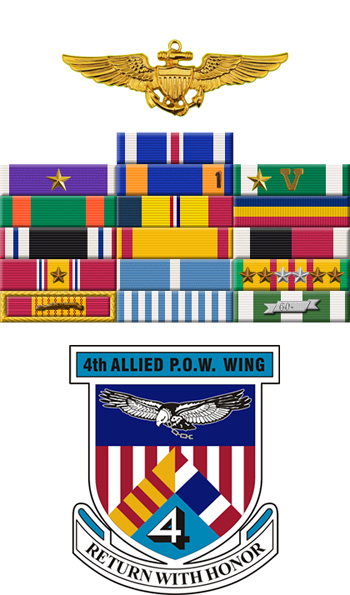
|
Robert J. Schweitzer |
 |
|||
| Rank, Service | ||||
Captain O-6, U.S. Navy |
||||
| Veteran of: | ||||
|
||||
| Tribute: | ||||
Bob Schweitzer was born on February 25, 1932, in Pottsville, Pennsylvania. He enlisted in the U.S. Navy on August 22, 1950, and after completing basic training he served at NAS Willow Grove, Pennsylvania, until February 1952, when he entered the Naval Aviation Cadet Program at NAS Pensacola, Florida. He was commissioned an Ensign in the U.S. Navy and designated a Naval Aviator on July 2, 1953, and then served as an AD-6 Skyraider pilot with VA-95 at NAS Alameda, California, from August 1953 to October 1956. His next assignment was as a Flight and Academic Instructor at NAAS Whiting Field, Florida, from November 1956 to September 1959, followed by service on the staff of the Commander-in-Chief U.S. Pacific Fleet at Pearl Harbor, Hawaii, from September 1959 to February 1962. LCDR Schweitzer served as an A-4 Skyhawk pilot with VA-155 at NAS Lemoore, California, from February 1962 to April 1964, and then with VA-153 at NAS Lemoore from May 1964 to February 1965. His next assignment was as an Officer Assignment Officer with the Bureau of Naval Personnel at the Pentagon from February 1965 to January 1967, followed by A-4 Replacement Air Group training with VA-125 at NAS Lemoore from January to July 1967. CDR Schweitzer then served with VA-144 at NAS Lemoore and deployed aboard the aircraft carrier USS Kitty Hawk (CVA-63) from July 1967 until he was forced to eject over North Vietnam and was taken as a Prisoner of War on January 5, 1968. After spending 1,896 days in captivity, CDR Schweitzer was released during Operation Homecoming on March 14, 1973. He was briefly hospitalized at the Naval Hospital in Oakland, California, and was assigned to NAS Treasure Island, California, at the time of his death in an automobile accident on January 24, 1974. He was promoted to Captain posthumously and buried at sea from the aircraft carrier USS Ranger (CV-61) on February 4, 1974. |
||||
|
||||

